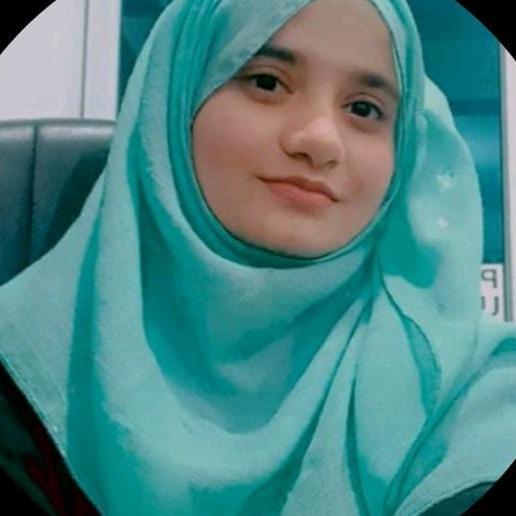Gravity هاكاثون Summary
🗓️ انضموا إلينا افتراضيًا، ابتداءً من الساعة 6:00 مساءً يوم 2 نوفمبر وحتى الساعة 6:00 مساءً يوم 4 نوفمبر، لتجربة تعليمية وإبداعية في مجال الفضاء وعلم الفلك. ⚡ خلال هذه الفترة، ستكون لديكم فرصة لاستكشاف وتعزيز مهاراتكم، بغض النظر عن مستوى خبرتكم. 👥 سواء كنتم عاشقين للفضاء أم محترفين في علم الفلك، ستجدون أنفسكم في بيئة مناسبة للتعلم والتعاون مع مجتمع يشاركك نفس الاهتمامات. 💡 ستحصلون على فرصة للوصول إلى الموارد والأدوات اللازمة لاستكشاف أفكار تتعلق بالفضاء وابتكار مشاريع مثيرة. 🏆 هناك فرصة للمشاركة والفوز بجوائز قيمة في مسابقات مثيرة تتعلق بعلم الفلك والفضاء. 🌏 انضموا إلى مجتمع الرواد في مجال الفضاء وعلم الفلك، شاركوا أفكاركم وابتكاراتكم مع العالم. ⌛ الأماكن محدودة، سجلوا الآن و احجزوا مكانكم في هذا الحدث الملهم والمبدع!

Hackathon Overview
Our AI hackathon brought together a diverse group of participants, who collaborated to develop a variety of impressive projects based on:
771
Participants
67
Teams
12
AI Applications
Winners and Finalists
- We are in the process of selecting the finalist teams.
- Your voice matters! Vote on your favorite projects in the section below.
- Join us for the winner announcement stream, which will be streamed live on Twitch.
Pathfinders
Our innovation, PathFinders, responds adeptly to the escalating threat of space debris to satellite operations. By employing cutting-edge deep learning models for collision prediction, PathFinders delivers an innovative approach. Using neural networks meticulously trained on orbital data, our system not only predicts potential collisions but also visualizes debris in Virtual Reality, creating a dynamic 3D representation of the space environment. To make this invaluable tool even more accessible, we designed a user-friendly interface, seamlessly blending various programming languages, including Python, HTML, Javascript, and CSS. Our commitment to real-time accuracy is underlined by the integration of advanced data tracking systems for debris and satellites. This real-time data is skillfully preprocessed and manipulated, empowering space agencies and satellite operators with actionable insights for proactive risk mitigation. PathFinders stands as the beacon of technological advancement in the mission to safeguard space exploration and satellite operations from the looming threat of space debris
PathFinders
STELLA
Our AI-powered website is your gateway to a comprehensive educational experience, offering a diverse range of astronomy content, from text to captivating images and videos. Designed with inclusivity in mind, it caters to various learning preferences, whether you enjoy reading, listening, or visual engagement. Welcome to our platform, where learning becomes an enjoyable and immersive journey through the cosmos. I"Imagine creating an AI tool fueled by an extensive dataset of space exploration knowledge, encompassing images, mission data, and scientific concepts. This tool is not only capable of providing comprehensive and informative answers to your space-related inquiries but can also unleash creativity by generating diverse text formats, from scripts, and articles, all inspired by the mysteries of the universe." In a world where the cosmos continues to captivate our imagination, our platform and AI tool bring the wonders of space to your fingertips. Whether you seek knowledge, inspiration, or creative exploration, we invite you to embark on a cosmic journey with us. Explore, learn, and be inspired as we unravel the mysteries of the universe together."
STELLA
Astronaut Medic
Astronauts in space face a unique set of health challenges, many of which are caused by the microgravity environment. While medical staff on Earth are available to provide support, the time it takes for their response can be life-threatening. This is where our AI-powered audio guide comes in. Our audio guide is designed to provide astronauts with real-time first aid instructions and treatment advice, tailored to their individual symptoms. The audio guide can be activated by voice command, and it will use the latest medical knowledge to provide the best possible care. We believe that our audio guide has the potential to revolutionize the way that astronauts are treated for medical emergencies. By providing immediate and personalized care, our audio guide can help to reduce stress and anxiety, improve outcomes, and save lives.
Ashawes
Speakers, Mentors, and Organizers

Haneen Salih
Marketing and Communication
.png&w=3840&q=75)
Muhammad Inaamullah
.png&w=3840&q=75)
Muhammad Talha
This event has now ended, but you can still register for upcoming events on lablab.ai. We look forward to seeing you at the next one!
Checkout Upcoming Events →Submitted Concepts, Prototypes and Pitches
Submissions from the teams participating in the Gravity هاكاثون event and making it to the end 👊
Exoplanet Hunters
Welcome to Exoplanets Hunter, where the wonders of the universe come alive through your data. Transform your input into a simulated exoplanet, complete with a habitability percentage based on the latest feeds from a live server. We pride ourselves on sourcing confirmed exoplanet data from well-known and reliable resources, ensuring the utmost accuracy in your cosmic exploration. Our website bridges the gap between enthusiasts and the vast field of exoplanet studies. By providing an intuitive platform, we aim to make the analysis of these distant worlds accessible to everyone. The simulated planets generated on our site offer users a tangible connection to the celestial bodies discovered beyond our solar system. The real-time updates from our connected live server keep you in the loop with the latest findings in exoplanet research. This commitment to up-to-date information enhances the accuracy of your simulated exoplanet's habitability assessment. At Exoplanets Hunter, we're fueled by the curiosity to uncover the mysteries of the cosmos. Our overarching goal is to democratize the study of exoplanets, inviting users of all backgrounds to engage in the thrilling pursuit of understanding these distant worlds. Who knows, among the countless simulated exoplanets, we might just stumble upon signs of extraterrestrial life. Join us in the exploration of the unknown, where each simulated exoplanet brings us one step closer to unraveling the secrets of the universe.
Dimensions
Wikimoons
Our website is a gateway to the fascinating world of the moons in our solar system. We're on a mission to make the wealth of information about these celestial companions accessible, enjoyable, and visually captivating. Here's what you can expect from us: Comprehensive Lunar Knowledge: Our website is a repository of data, images, and insights about over 200 moons in our solar system. No more need to scour various sources; everything is neatly organized in one place. User-Friendly Interface: We believe in making exploration easy. Our user-friendly design ensures you can navigate the vast universe of lunar information with ease. Visual Allure: We understand the importance of aesthetics. Beautiful designs and captivating visuals will enhance your lunar journey, ensuring that learning about these celestial wonders is as enjoyable as it is informative. Educational Content: Whether you're a novice or a seasoned space enthusiast, our website offers a variety of educational resources, from articles to interactive tools. We cater to diverse interests and knowledge levels. Regular Updates: The cosmos is in constant motion, and our website keeps pace. We're committed to providing the latest discoveries and findings about the solar system's moons. Our aim is to kindle your curiosity and ignite your sense of wonder about the moons that orbit planets, dwarf planets, and asteroids in our solar system. Whether you seek stunning images, scientific insights, or an engaging learning experience, we're here to facilitate your cosmic exploration. Join us on this celestial journey, and together, let's uncover the mysteries and beauty of the moons in our remarkable solar system.
Space Conquerors
Pathfinders
Our innovation, PathFinders, responds adeptly to the escalating threat of space debris to satellite operations. By employing cutting-edge deep learning models for collision prediction, PathFinders delivers an innovative approach. Using neural networks meticulously trained on orbital data, our system not only predicts potential collisions but also visualizes debris in Virtual Reality, creating a dynamic 3D representation of the space environment. To make this invaluable tool even more accessible, we designed a user-friendly interface, seamlessly blending various programming languages, including Python, HTML, Javascript, and CSS. Our commitment to real-time accuracy is underlined by the integration of advanced data tracking systems for debris and satellites. This real-time data is skillfully preprocessed and manipulated, empowering space agencies and satellite operators with actionable insights for proactive risk mitigation. PathFinders stands as the beacon of technological advancement in the mission to safeguard space exploration and satellite operations from the looming threat of space debris
PathFinders
alien
Our idea is designed to "kill the loneliness" faced by astronauts during their missions. We propose the creation of advanced visual AI assistants, equipped with real-time data, to not only alleviate loneliness but also offer a comprehensive set of features. These features may include real-time communication capabilities, personalized entertainment recommendations, mental health monitoring, and in-depth space mission information and many other features to enhance the overall well-being and productivity of astronauts during their missions
Astronauts
Astronaut Medic
Astronauts in space face a unique set of health challenges, many of which are caused by the microgravity environment. While medical staff on Earth are available to provide support, the time it takes for their response can be life-threatening. This is where our AI-powered audio guide comes in. Our audio guide is designed to provide astronauts with real-time first aid instructions and treatment advice, tailored to their individual symptoms. The audio guide can be activated by voice command, and it will use the latest medical knowledge to provide the best possible care. We believe that our audio guide has the potential to revolutionize the way that astronauts are treated for medical emergencies. By providing immediate and personalized care, our audio guide can help to reduce stress and anxiety, improve outcomes, and save lives.
Ashawes
Space Galaxy 93
The evolution of space helmets is revolutionizing astronaut safety. With advancements in technology, the latest space helmets offer enhanced impact protection, improved communication capabilities, and augmented reality displays for heightened situational awareness. These innovations enable astronauts to undertake increasingly ambitious missions while minimizing risks, ensuring their well-being in the harsh conditions of space exploration. The current helmet is being developed using emerging technologies such as: 1- 3D Printing : To reduce the high cost of the current helmet, where the price ranges between 150 - 180K dollars, the innovation helmet is made of carbon fiber materials, which makes it lighter than normal helmets. Moreover, the dimensions of this helmet can be customized depending on the specific dimensions. Although , they are similar in size to regular sapace helmets, it has a design that allows astronomers to look up at the sky without obstruction while providing protection from ambient light and other environmental factors. 2- Argument Reality (AR) technologies: The astronaut’s vital data appears on the right side of the helmet’s internal screen, and information about items appears in front of the astronaut on the left side of the helmet. 3- Artificial Intelligence (AI): The helmet is connected to internal sensers and external cameras to analyze the astronaut’s vital signs, the elements in front of him, and also the environment around him. 4- Machine Learning: The helmet is connected to the vital devices attached to the astronaut’s suit, so that changes in vital signs such as oxygen flow, muscle atrophy, balance and gravity are sensed and adjusted as needed.
Space Galaxy 93
Miralux
Our innovative project, Miralux, focuses on gathering data about Earth-like planets in order to assess their habitability. This information is then sent to Large Language Models (LLMs) for comprehensive analysis. Our ultimate goal is to generate a wide range of habitable planets that have not yet been discovered, and simulate their appearance and description using Augmented Reality (AR) techniques. The data collection method involves utilizing information available on NASA's website, which includes the use of space observatories and space probes to detect potential planets. Advanced stellar monitoring techniques are also employed to detect changes in cosmic signals that may indicate the presence of planets. Using Large Language Models, the collected data is analyzed to evaluate the habitability of the planets. This includes analyzing the geological and atmospheric composition of the planets, estimating temperature and chemical composition, and other important factors. With the use of augmented reality techniques, the appearance and description of the planets are simulated in realistic and engaging ways.
Miralux
STELLA
Our AI-powered website is your gateway to a comprehensive educational experience, offering a diverse range of astronomy content, from text to captivating images and videos. Designed with inclusivity in mind, it caters to various learning preferences, whether you enjoy reading, listening, or visual engagement. Welcome to our platform, where learning becomes an enjoyable and immersive journey through the cosmos. I"Imagine creating an AI tool fueled by an extensive dataset of space exploration knowledge, encompassing images, mission data, and scientific concepts. This tool is not only capable of providing comprehensive and informative answers to your space-related inquiries but can also unleash creativity by generating diverse text formats, from scripts, and articles, all inspired by the mysteries of the universe." In a world where the cosmos continues to captivate our imagination, our platform and AI tool bring the wonders of space to your fingertips. Whether you seek knowledge, inspiration, or creative exploration, we invite you to embark on a cosmic journey with us. Explore, learn, and be inspired as we unravel the mysteries of the universe together."
STELLA
Riveria - Virtual Assistant
Riveria is conceived as the ultimate astronomic virtual assistant, a trusted ally for astronauts and scientists embarking on the enigmatic journey into the cosmos. Its core objectives are simple yet profound: to empower, simplify, and extend the horizons of knowledge and discovery. Assisting Astronomers in Astronomical Research: Riveria equips astronomers, astronauts, and researchers with cutting-edge data analysis capabilities. In the face of the overwhelming influx of astronomical data, it becomes a beacon, illuminating patterns, recognizing celestial bodies, and even forecasting forthcoming cosmic events. It relegates the time-consuming task of data sorting to history, freeing scientists to focus on the questions that matter most. Performing Complex Astrophysical Calculations: Riveria's computational prowess is a force of nature. It possesses the capability to perform intricate astrophysical calculations, unraveling the intricacies of celestial phenomena. Its number-crunching abilities empower scientific discoveries and widen the boundaries of our understanding of the universe. Remote Satellite Control: Real-time satellite control is the lifeblood of space exploration. Riveria offers an intuitive interface for controlling orbiting satellites, granting immediate access to imaging and telemetry data. This control is instrumental in scientific observations, research, and the ceaseless advancement of space exploration. Seamless Astronaut Communication: The vastness of space can be isolating, but Riveria is the bridge that connects astronauts. It ensures that they remain connected, engaged, and capable of collaborating with precision, regardless of their positions in the cosmos. This capability vanquishes the loneliness of space, fostering teamwork and enhancing the astronaut experience..
Riv
FDS mini drones
In the forefront of fire detection innovation, this system converges cutting-edge technology, sustainable energy, and Python programming. At its core is a drone, seamlessly integrating a high-res webcam, solar panels, and a dry powder system. Solar panels ensure prolonged aerial surveillance, aligning the system with eco-friendly practices. The webcam captures real-time visuals, enhancing early fire detection. Python programming serves as the system's intelligence, enabling real-time data analysis and adaptive responses. This dynamic language transforms the system into a learning entity, evolving with changing needs. In the face of a fire, the Python-programmed system orchestrates a swift response. The drone, armed with a sophisticated dry powder system, executes precise firefighting maneuvers guided by Python algorithms. Sustainability echoes throughout, from solar-powered operations to eco-friendly firefighting measures, reducing the system's environmental impact. The synergy of advanced technology and Python programming creates a cohesive solution, adaptable to emerging fire detection needs. Python's open-ended nature allows for continuous refinement, ensuring the system evolves intelligently. This system stands not just as a fire sentinel but as a holistic, sustainable, and technologically advanced solution, reshaping the landscape of firefighting.
0X SpaceX
Virtual digital space lab
Digital Space uses AI to predict scientific outcomes, leveraging NASA's databases on space and Mars to feed its predictive models. Data is refined with Python and the system is trained via deep learning, targeting increasing accuracy milestones, starting from 30% up to 90%. Virtual reality augments this system, offering a 3D virtual lab accessible through Softwire's website, enhancing research capabilities. The platform enables live broadcasting and interactive collaboration, aiming to bypass the limitations of physical and cost barriers in space R&D. The system aspires to support the space research community, foster innovation, reduce risks to astronauts, and provide an authentic simulation for experiments, thereby accelerating scientific progress and technical development in space exploration. Added values: 1- help Reducing the risks and costs of spaceflight and experiments 2- Adding Virtual reality and artificial intelligence technologies in a virtual laboratory corresponding to the planet Mars, which helps reduce errors in health and scientific research. 3- Strengthening a database of new research and space flights based on the NASA database
Digital space
Astronomers AI Assistant
Introduction: Introducing the Astronomers AI Assistant, your reliable companion for all things space-related! Join us on a cosmic journey as we explore how this remarkable tool operates, uncover the tech that powers it, and dive into an intriguing story to ignite your passion for the universe. How It Works: Connect with the Cosmos: Our AI buddy serves as your personal astronomy expert. Using sophisticated Natural Language Processing (NLP), it deciphers your space queries. If you throw a non-cosmic question its way, it kindly replies, "That's not my expertise." Time-Travel through Astronomy: Ever wondered about upcoming celestial events like meteor showers or eclipses? This feature combines NLP with time-travel-like capabilities. Just specify a date range, and it reveals all the cosmic happenings during that time. Identify Celestial Objects: Whether you're curious about the Orion Nebula, the Andromeda Galaxy, or a specific star you want to name after a loved one, our AI buddy delves into astronomy databases to unveil information about celestial objects by name. It provides details on where to find them in the night sky, their distance from Earth, and fascinating trivia. Tech Insights: Natural Language Wizardry (NLP): Our AI's secret sauce for engaging in conversations and delivering precise space information. Time-Travel Expertise: Ideal for tracking down celestial events based on your chosen date range. Cosmic Encyclopedia: A treasure trove of data that keeps you updated with the latest and greatest space knowledge. Let's Embark on a Cosmic Adventure:
Astroprog






